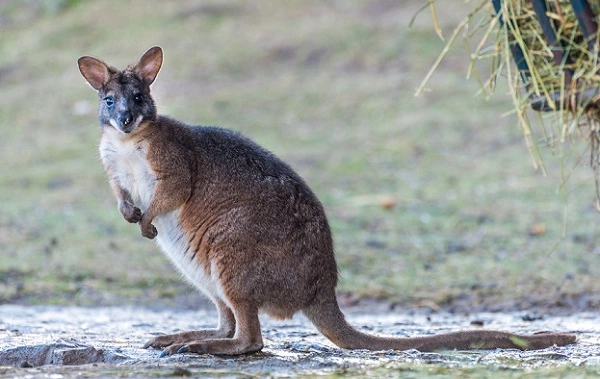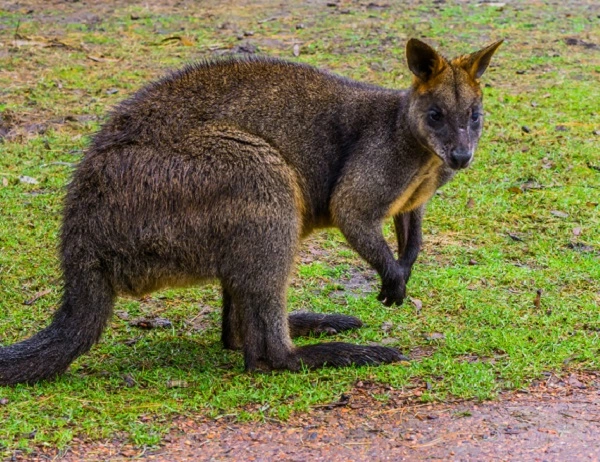As Wallabies continue to thrive in the wild, more and more people are becoming curious about these unique animals. Here we will discuss everything you need to know about wallabies, from their physical characteristics and behavior to where they can be found in the wild. We’ll also dispel some of the myths that have built up around these creatures over the years. So if you’re thinking of adding a wallaby to your zoo or wildlife park, or if you just want to learn more about these interesting animals, read on!

Wallaby Description
Wallabies are small to medium-sized marsupials that are found throughout Australia and New Guinea. The name ‘wallaby’ is derived from an Aboriginal word meaning ‘possum’. Wallabies vary considerably in size and coloration, but they generally have a stocky build, short fur, and large hind feet. Most species of wallaby are nocturnal, although some (such as the tammar wallaby) are active during the day. Wallabies are very good jumpers and climbers, and they use these skills to escape from predators. Wallabies are herbivores, and their diet consists mainly of grasses and browse. They obtain most of their water from the food they eat, but they will also drink from waterholes on hot days. Wallabies live in small groups called mobs, which typically consist of a single male and several females. baby wallabies are known as joeys, and they live in their mother’s pouch until they are several months old. Wallaby populations have declined sharply in recent years due to hunting and habitat loss. As a result, several species of wallaby are now considered to be endangered.
Wallaby Habitat
Wallabies are found in a variety of habitats, from the dense rainforests of Australia to the open plains of Africa. They are adaptable creatures that can live in a wide range of climates and ecosystems. Wallabies are most often found in areas with plenty of food and water, as well as adequate shelter from predators. In Australia, wallabies are often found near humans, as they are attracted to the gardens and lawns where there is plenty of grass to eat. Wallabies are also known to inhabit rocky outcrops and forests, where they can find shelter from the hot sun. While wallabies are not currently considered to be endangered, their habitat is under threat from human activity, such as agriculture and urbanisation. As a result, it is important to protect the natural habitat of these unique creatures.
Wallaby Diet
Wallabies are small to medium-sized marsupials that are found throughout Australia and New Guinea. Though they look similar to kangaroos, they are typically smaller and have shorter tails. Wallabies can be found in a variety of habitats, including forests, grasslands, and deserts. Due to their diverse diet, wallabies are able to adapt to different environments. Wallabies primarily eat grasses and other plants, but they will also eat insects, reptiles, and small mammals. Their diet varies depending on the season and their location. For example, during the dry season, wallabies in the desert will eat more fruits and leaves in order to get the moisture they need. Wallabies are able to extract nutrients from even the toughest of plants, thanks to their specially adapted digestive system. With their powerful hind legs, wallabies can also jump great distances in order to escape predators or find food. All in all, the wallaby is a versatile and fascinating animal.

Wallaby Size
Wallabies are small to medium-sized marsupials found in Australia and New Guinea. They are closely related to kangaroos and Wallaroos, and are typically between 30 and 90 cm in length. Wallabies have short fur that is usually grey or brown, although it can also be black, white, or red. Most Wallabies are nocturnal, and they spend their days sheltering in the shade of trees or rocks. At night, they emerge to feed on grasses, shrubs, and other vegetation. Wallabies are particularly well-adapted to life in arid environments, and can often be seen bounding across the Australian Outback in search of food and water. Although they are not as well-known as their larger cousins, the Wallaby is an impressive animal that plays an important role in its ecosystem.
Wallaby Lifespan
Wallabies are a type of marsupial that is native to Australia and New Guinea. There are several different species of wallaby, and they range in size from the small pygmy Wallaby, which weighs less than 2 kg (4.4 lb), to the Great Red Wallaby, which can weigh up to 18 kg (40 lb). The average lifespan of a Wallaby is 10-12 years, but this can vary depending on the species and the environment in which they live. For example, Wallabies living in captivity often have a lifespan that is significantly shorter than their wild counterparts.
Wallaby Behavior
Wallabies are often mistaken for being the same as kangaroos but they are actually different animals all together. Wallabies are small to medium-sized marsupials that can be found in woodlands, grasslands, and deserts all throughout Australia and on some nearby islands. There are around 30 different species of wallaby that have been identified and they come in a wide range of colors including gray, brown, red, and black. Wallabies have powerful hind legs and long tails that they use for balance when hopping. They can reach speeds of up to 60 kilometers per hour (37 miles per hour) and can jump distances of up to 3 meters (9.8 feet). Wallabies are mostly herbivores but some species will also eat insects. Wallabies are very social animals and live in groups called mobs. The size of a mob can vary depending on the species but can range from just a few individuals up to 100 or more. Wallabies are very protective of their young and will fight fiercely to defend them from predators. Although wallabies are not considered endangered, some species are at risk due to habitat loss and hunting.
Wallaby Speed
Wallabies are small to medium-sized marsupials that are found in Australia and New Guinea. They are closely related to kangaroos and Joey’s, and like their larger cousins, they are capable of high jumps and quick starts. Wallabies can reach speeds of up to 60 kilometers per hour (37 miles per hour) and can jump distances of up to three meters (nine feet). Wallabies are generally shy and reclusive animals, but they can be very active when feeding or if they feel threatened. If you’re lucky enough to see a wallaby in the wild, you’ll be impressed by its speed and agility.
Wallaby Hunting
Wallaby hunting is a popular pastime in Australia. Wallabies are small, agile animals that are found in many different parts of the country. They are often considered to be pests because they compete with native species for food and habitat. As a result, many landowners allow wallaby hunting on their property. Wallaby hunting can be done with a rifle or a bow and arrow. The meat of the wallaby is often used for dog food or sold to game meat processors. Wallaby hunting is regulated by state and territory governments. In some areas, it is only allowed during certain times of the year. In others, there are no restrictions on when wallabies can be hunted.
Conclusion
Wallabies are marsupials that can be found in Australia and surrounding islands. These animals are known for their hopping ability, which helps them cover large distances quickly. Wallabies are also herbivores, and they typically eat grasses, leaves, and flowers. In the wild, wallabies live in groups called mobs. They are shy but curious creatures, and they will often watch people from a distance before deciding whether to approach or run away. Wallabies make great pets and can adapt to a wide range of living conditions. If you’re interested in learning more about these fascinating creatures, please visit our website or contact us today.
Frequently Asked Question

